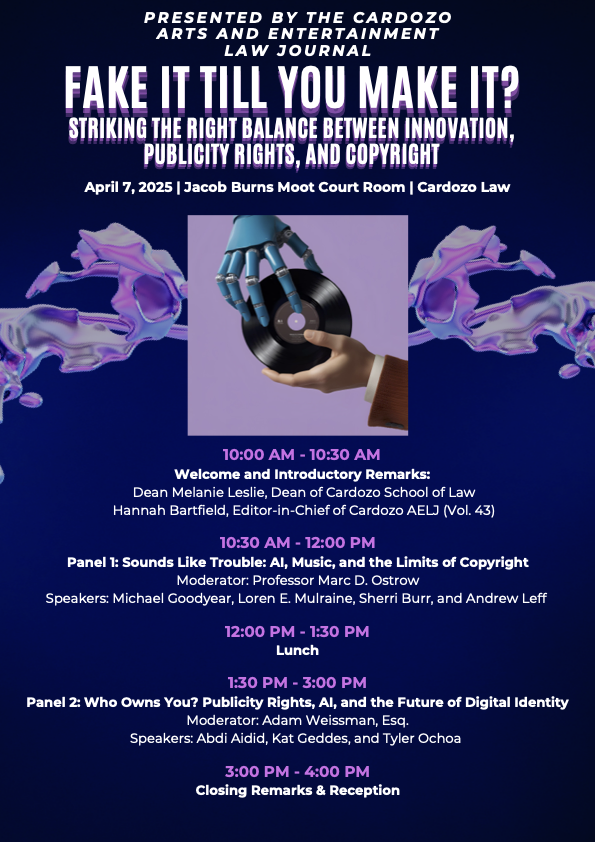Business owners have a lot to consider when starting a business. Competing with themselves should not be something they need to think about. However, for businesses dealing with counterfeiters, this is exactly what is happening. Counterfeit products are not new to the market, but they have expanded drastically into the ecommerce and social media markets.1 A problem that is magnetized by selling counterfeit on the internet is that it has become even harder for buyers to recognize that they are not buying an original product.2
For example, one artist, Buchholz, has been dealing with counterfeit products marketed on Facebook advertisements.3 While the advertisements show photographs of his products, the products are not his.4 This is an issue for artists such as Buchholz not just for lost revenue, but also for reputation damage.5 Buchholz found many one-star reviews from angry customers who “thought they were buying the authentic Alternate Histories calendars, rather than the knockoffs.”6 Some customers then contacted Buchholz to complain, but because they did not buy an authentic product he could not really help them. However, he feels that the counterfeit products are harming his business.7 Another artist, Reynolds, shares that getting rid of counterfeiters can be like “whack-a-mole.”8
Counterfeit products may also be dangerous. The ICE website warns that not only do counterfeits “impact[] the economic growth of legitimate businesses and consumers through lost revenue, downtime, and replacement costs,” but the products can “pose[] a significant health and safety threat to consumers.”9 Aaron Muderick, the founder of Crazy Aarons magnetic putty, had such an issue with counterfeits of his product found on the internet.10 While Muderick’s product follows strict federal safety standards to make sure the magnets used do not present choking hazards, counterfeits of his goods “fit easily inside a tube used to measure unsafe product components.”11
A big issue is that social media companies have become a hub for such products.12 This may be due to the potential reach of social media platforms as well as the amount of consumers willing to buy products they see on social media.13 In addition, the e-commerce model “actually facilitates the sale of fakes.”14 This is because product listings are easy to see, making it simple for product details to be duplicated.15 In addition, the amount of counterfeits, which some estimate to be around 20% of products on social media, makes preventing them almost impossible.16 Also, counterfeiters can use A.I. systems to find characteristics of brands that will help make their product seem “as convincing as possible.”17
Counterfeiters also have the advantage of legal provisions that protect social media companies from copyright infringement by users under the Digital Millennium Copyright Act (DMCA).18 Section 512 of the DMCA gives social media companies immunity from copyrighted materials posted on their website by users as long as they work with copyright owners to remove copyrighted content upon notification from the owners.19 This allows social media companies to have a “safe harbor” while working with copyright owners to remove copyrighted content.20
While these policies are great in theory, authentic business owners have difficulty working with companies to take down material due to stringent policies.21 In fact, Sandra Aistars, a director of the Arts and Entertainment Advocacy Clinic at George Mason University, had law students attempt to take down the copyrighted material.22 They found that proving material as fraudulent was a daunting task, with site operators coming back and asking the students to prove that they are the owner or an agent of the owner after they had already given an affidavit under penalty of perjury.23
While the problem may be too great to fix, legislature should consider implementing new laws to help minimize copyright issues on e-commerce platforms. Other countries have begun to combat the issue in different ways. For example, China requires quick action once an infringement is reported, and if the platforms do not, they are fined.24 Furthermore, the Indian government has drafted a policy that would ensure that businesses have a registered business and would require sites to inform businesses of counterfeits of their products and refund customers for counterfeits.25 By creating new laws, the legislature can help authentic business owners garner profits from their own products. It will also allow the government to better regulate businesses to make sure that products are safe for consumers.
Eliane Aini Sabin is a Second Year Law Student at the Benjamin N. Cardozo School of Law and a Staff Editor at the Cardozo Arts & Entertainment Law Journal. Eliane is interested in corporate, trust & estate, real estate, and music law.
- Ryan Williams, The Growth of Fake Products on Social Media, Red Points, https://www.redpoints.com/blog/the-growth-of-fake-products-on-social-media/ [https://perma.cc/D82J-NTCC] (last visited Feb. 13, 2022).
- Kim Lyons, Artists are Playing Takedown Whack-A-Mole to Fight Counterfeit Merch, The Verge (Feb. 11, 2022, 8:00 AM), https://www.theverge.com/22924353/artists-counterfeit-merch-facebook-amazon-etsy-dmca [https://perma.cc/VET6-7YHK].
- Id.
- Id.
- Id.
- Id.
- Id.
- Id.
- Department of Homeland Security, Counterfeit Goods: A Danger to Public Safety, ICE (Oct. 27, 2021), https://www.ice.gov/features/dangers-counterfeit-items [https://perma.cc/D5B2-Y767].
- Megan Cerullo, Counterfeit Products Flood Internet Ahead of Holidays, CBS News (Nov. 3, 2021, 4:38 PM), https://www.cbsnews.com/news/counterfeit-products-abound-internet-ahead-of-holidays/ [https://perma.cc/4ASC-NRTJ].
- Id.
- Williams, supra note 1.
- Id.
- How Bad is the Counterfeit Problem in Ecommerce?, Visua , https://visua.com/counterfeit-problem-in-ecommerce/ [https://perma.cc/R2AG-JX7E].
- Id.
- Id.
- Id.
- Lyons, supra note 2.
- 17 U.S.C. § 512 (1998).
- Section 512 of Title 17: Resources on Online Service Provider Safe Harbors and Notice-and-Takedown System, Copyright.gov (2020), https://www.copyright.gov/512/ [https://perma.cc/DEY8-YLVT] (last visited Feb. 13, 2022).
- Lyons, supra note 2.
- Id.
- Id.
- How Bad is the Counterfeit Problem in Ecommerce?, supra note 14.
- Id.



